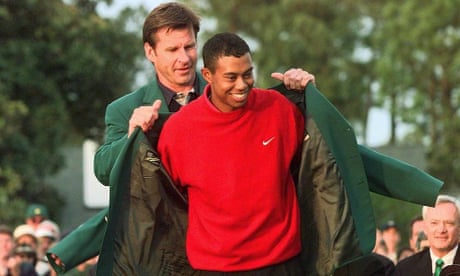
The golden age of the lucrative partnership overlapped with the final days of the American monoculture
The announcement that Tiger Woods and Nike have called time on their 27-year commercial partnership came as no surprise to anyone who’s been paying close attention. It’s been nearly a decade since Nike, which said in a recent earnings call it will seek $2bn in cost savings over the next three years, stopped making golf equipment, including balls, clubs and bags. And Woods’ limited schedule following his exhaustive litany of surgeries, both before and after his career-threatening February 2021 car accident, have made the 15-time major champion less visible than ever.
But there’s a specific finality to Monday’s conscious uncoupling, which came one week after Woods’ 48th birthday, that signals the end of an era in the business of sport: the death of the sort of all-encompassing athlete-brand marriage that truly flooded the cultural mainstream. The obvious template is Nike’s union with Michael Jordan, a leviathan deal whose modest origins were playfully dramatized for the screen last year. Indeed, Phil Knight spent three years aggressively recruiting Woods based on the Jordan proof of concept: that a single charismatic sportsperson touched with divine gifts could shoulder an entire sports-entertainment empire. “Everybody has been looking for the next Michael Jordan, and they were looking on the basketball court,” the Nike chairman said at the time. “And he was walking down the fairway all the time.”




